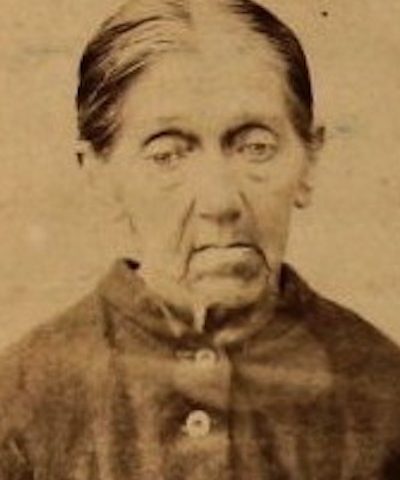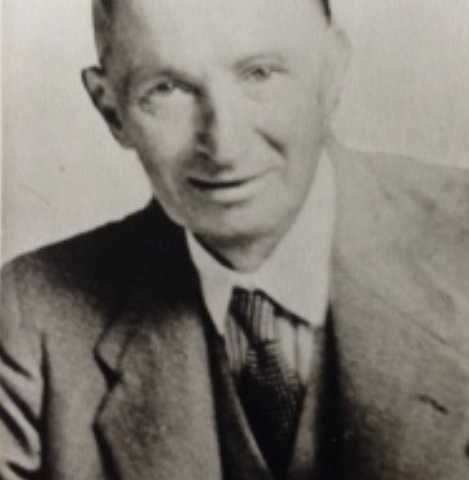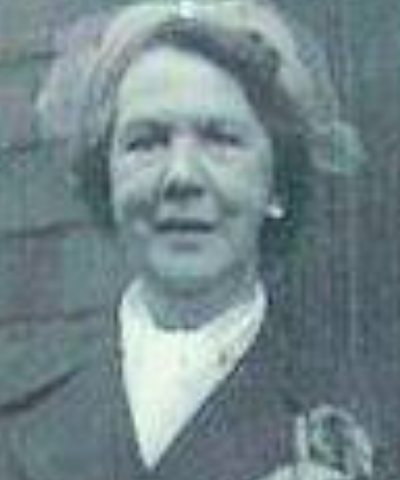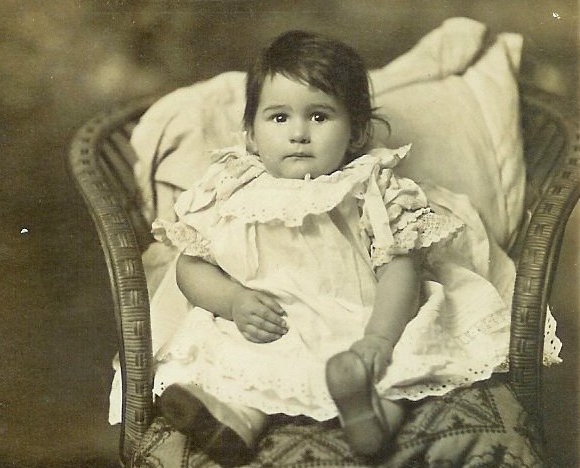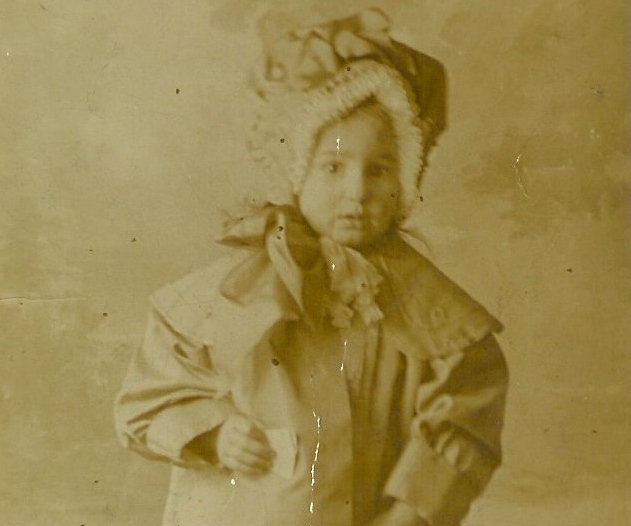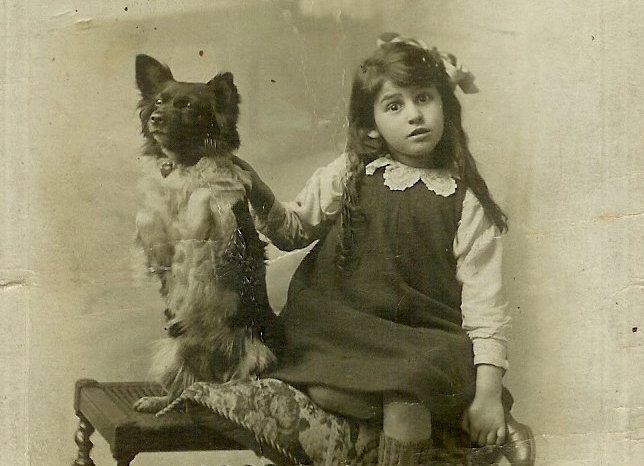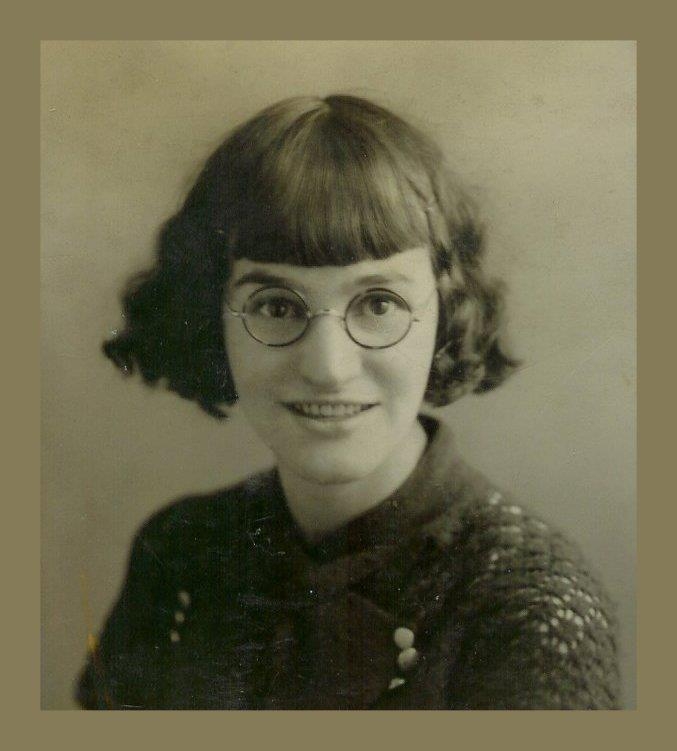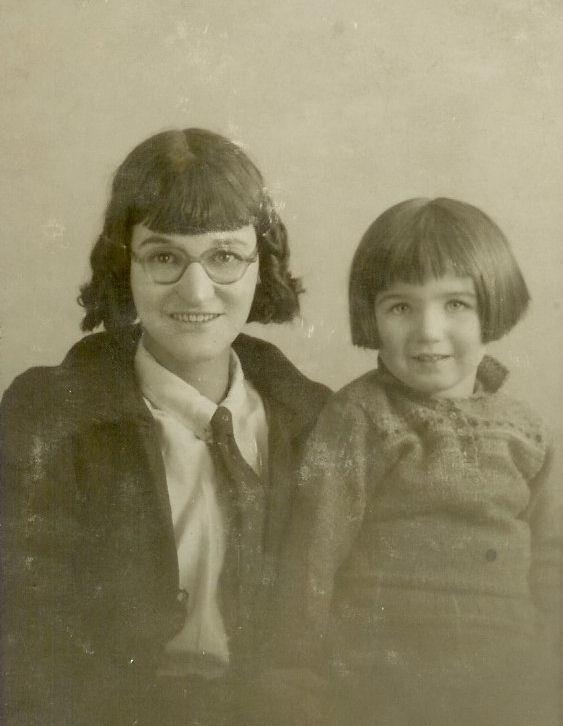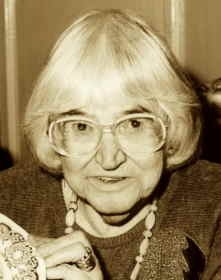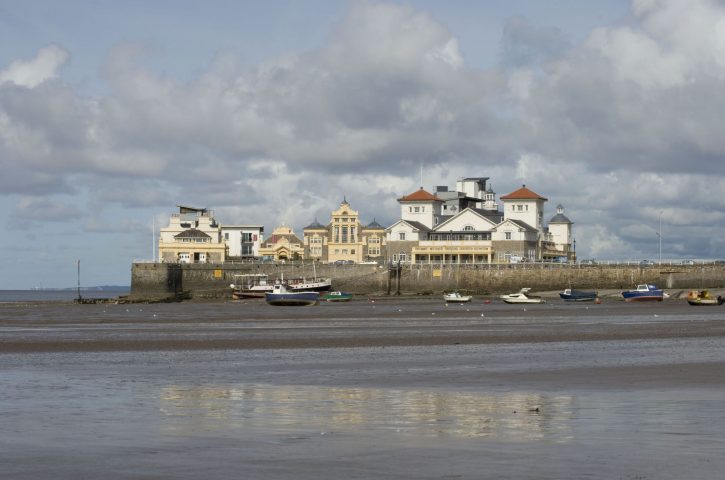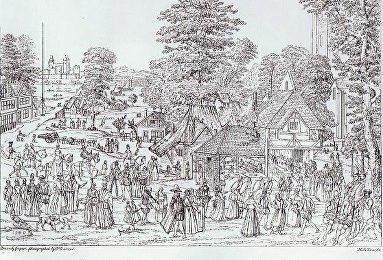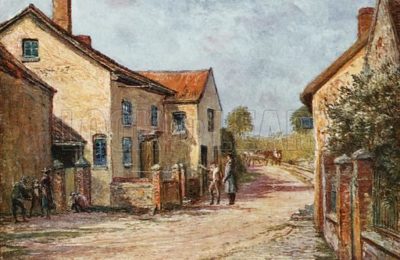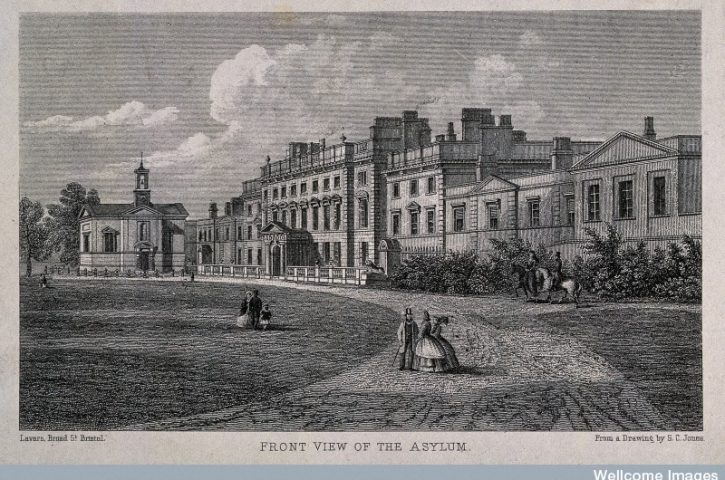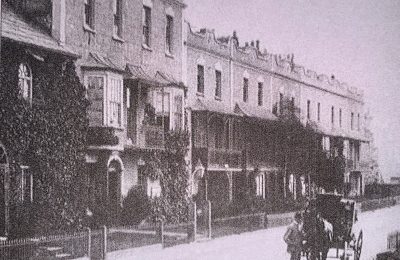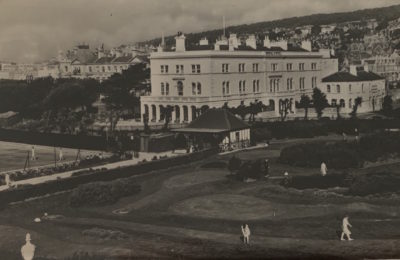
Thomas JAMES, was born in 1768, the second son of the tailor Thomas William JAMES and his wife Keturah JAMES (nee BUTT).
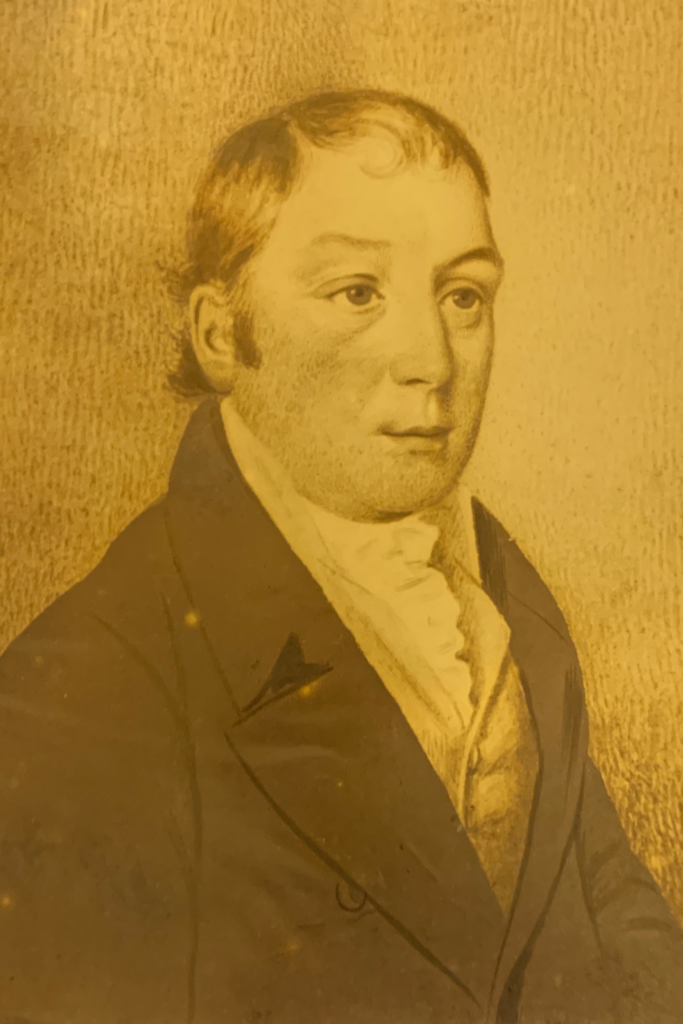
When I first saw this portrait of Thomas JAMES I thought I could see a family resemblance, despite being separated by almost 200 years. So I had a bit of fun taking this photo to see if there was a family resemblance. What do you think?
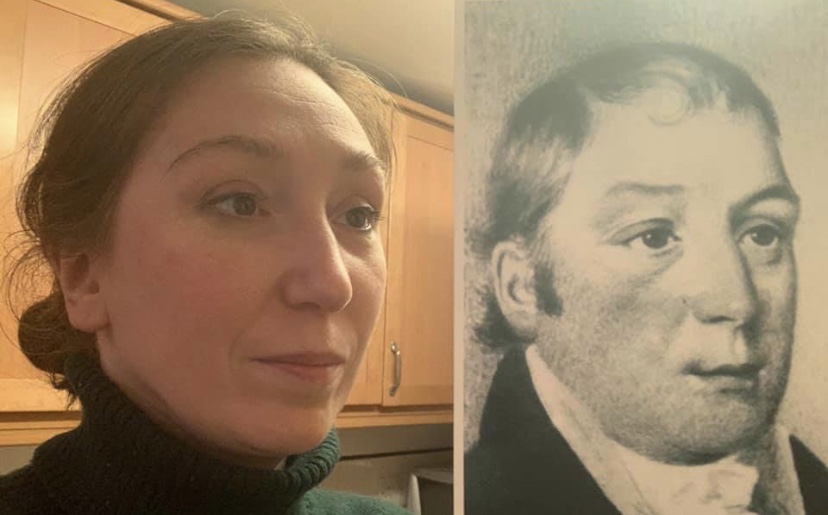
Thomas JAMES lived in the mid-18th century in a beautiful and picturesque rural village in north Somerset, named Brislington. In the 18th century, Brislington was a quaint village which was popular as a country retreat for successful merchants of Bristol and landed gentry. The area was termed “the prettiest village in Somerset” by Victorian times, but today Brislington is a south-eastern suburb of the city of Bristol, about 2 miles from the centre, and little of the village as it would have appeared in the 18th century remains.
Thomas JAMES Family Life.
In or around 1790, when Thomas was around the age of 22, he married a young woman named Mary.
It is difficult to establish from the historical records available what Mary’s maiden name was. However, it is possible that his young wife was Mary WEBB of Downside. A marital record exists for a Thomas JAMES and a Mary WEBB who married in Holcombe, Somerset, on 18th January 1790. The bride and groom provided their mark, rather than signing the registry, so this would suggest, if it is the correct Thomas and Mary JAMES, that they were illiterate as would not be uncommon for folk of the time period.


It would seem that Thomas and Mary JAMES went on to have a very long and successful marriage. They had ten children together over a nineteen-year period. First, they had a daughter, Harriet JAMES in 1792, then a son, Thomas Richard JAMES in 1794. This was followed by Mary JAMES (1796), William JAMES (1797), Elizabeth JAMES (1800), Henry Butt JAMES (1802), Rachel JAMES (1803), Joseph JAMES (1806), Elenor JAMES (1808) and John JAMES (1811).
The family lived in a house that was thought to be called Brook House or Hayward House. It fronted directly onto the Bath Road through the centre of Brislington. It was situated next to Brislington brook and records show that it was a sizeable dwelling with a number of achres of land, outbuildings and Thomas JAMES’s carpenters yard next to it.
The house itself was situated on land towards what is now the junction with Kenneth Road, at the bottom of Church Hill and directly faced St Luke’s Church, Brislington. It was just next door to the White Hart Hotel (which remains standing today, though is now the White Hart Performing Arts College).

The house where Thomas JAMES and his family are believed to have lived.
In later years, the house was to become the Brislington Tram Terminus. The Bristol Tram Company started their business fifty years or so after Thomas JAMES died, in 1876, so it would not have been there in his day. Nevertheless, the original house he lived in remained standing for many years (hence an available photograph of the building) until it was eventually, and very sadly, demolished for the purposes of road widening in 1927.

The old house can be seen above before it had been demolished for road widening, and it can also be seen in the background of the photo below. This photograph depicts the old village square during a celebration for the coronation of King George V in 1910. This would have been many years after Thomas JAMES and his family had lived there (since he died in 1831) but this was prior to its demolition (reportedly in 1927) so it shows what the home would have looked like.


Thomas JAMES appears to have been a very successful carpenter and builder as he owned two dwellings and large plots of land. At various points, his land and dwellings were advertised to let. In 1823 he reported that he had had several fruit trees stolen, it’s unclear as to whether they were uprooted or how they were stolen, but for information he advertised a reward of 10 Guineas.




Thomas James’ Occupation as a Carpenter & Builder
Thomas was a known carpenter and builder in the Brislington area. However, it’s unclear where, or with whom, he would have been apprenticed in his youth, since records suggests his father had been a Tailor. It’s therefore likely that he did an apprenticeship somewhere and with a master carpenter.
One possible record, which may relate to Thomas, shows that a Thomas JAMES signed up on 18 July 1779 to carry out an apprenticeship with a James JAMES, who was a Mastmaker in Bristol. However, he would only have been 11 years old at this time so this may have been a little early for him. If this was indeed his apprenticeship, then he would likely have completed this in around 1786.
Thomas JAMES’ Role as Congregational Church Founder in 1796
In terms of his religious views, Thomas JAMES was a spiritual and religious man and a non-conformist meaning that he was a dissenter from the doctrine of the Anglican Church. Brislington was an area very much associated with non-conformist religion and it’s likely that Thomas would travel with friends into Bristol to non-conformist meetings at the weekends, in addition to attending services at St Luke’s Church, Brislington.
In 1796, at the age of 38, along with his friend John TOMKINS and the Reverend John Waters, he started the first Congregational Church in Brislington by writing to the Bishop of Bath and Wells to get a licence to start their own church in a building that Thomas JAMES had built and which stood on his land.
A copy of the licence granted to start the church in 1796 hangs in the United Reform Church of Brislington even today.

The letter reads:
“Extracted from the Registry of the Lord Bishop of Bath and Wells.
To the right reverend father in God
Charles by Divine Permission Lord Bishop of Bath and Wells
May it please your Lordship
We whose names are hereunder subscribed being Protestant Dissenters of the Independent Denomination have set apart a building just erected situate and being in the Parish of Brislington within your Diocese for the Worship of Almighty God and we pray the said building might be recognised in your Lordship’s Court and a Certificate granted us according to the Laws made and provided for that purpose to His Majesty’s Protestant Dissenting Subjects
Dated this 20th day of May 1796
John Tomkins, Thomas James, John Waters Minister
These are to whom it may concern that the original
Certificate of which the above is a true Copy was on the twentieth Day of (May)
in the Year of our Lord 1796 brought into and is now remaining in the Registry
of the Lord Bishop of Bath and Wells
In……. of my hand
Edward Parfitt Deputy Registrar”
The original church was situated in the heart of the village, at the edge of his own land and next to his home.
The original site of the church building was opposite the Smithy and the King’s Arms Pub in Brislington. It was on the corner of what is now Kenneth Road, where later a public house called ‘Hollybush Inn’ would stand, however, now there is a block of flats on the original site. A wall from the original church remained as part of the Hollybush Inn until it was demolished.


The church fellowship went on to become the Church of Zion and later, the United Reform Church. They now they have a new building just a little further up the road.
The portrait of Thomas James that I was fortunate enough to get a copy of, along with a copy of the letter he signed, hung in the present Brislington United Reform Church for many years. The portrait was apparently removed in around 2010, under the church leadership of Christine Fowler, and unfortunately, at the time of writing the whereabouts of the portrait is now unknown. However, the church kept a copy of the portrait (though the dates attributed to the picture do not seem to match his actual birth and death dates), and the original letter granting the church formation still hangs in the church Vestry today.


Robert ‘Bob’ Simmons, Elder Emeritus of United Reform Church, said “The original Church building was erected just alongside Thomas James’ house at the end of a short path leading from the Bath Road. It was entered through a small wicker gate. The path, in the spring, was always lined with Primroses… The licence granted by the Bishop of Bath & Wells is still in existence and it is framed in the Vestry at the Church.”
Thomas JAMES’ Death

Thomas died on 30th September 1831. He is buried in St Luke’s Churchyard at Brislington (in Grave No. 4) along with many members of his family. His grave stone reads :
“Thomas James, Died Sepr 30th 1831, Aged 63 Years. A man universally belov’d and esteemed by a numerous circle of friends and his lamented family. Also of Mary, wife of the above Thomas James. Died Feby 10th 1842, Aged 74 Years. Also Elizabeth Pearson, daughter of the above.”


Thomas JAMES’ Last Will and Testament
Thomas JAMES’ will was dated 19th September 1831 and it was proved by the Prerogative Court of Canterbury on the 5th January 1832. The Estate, sworn £4000, included a Freehold House at Brislington and Freehold Land at Keynsham. He also held a lease on some land next to his house which was where his carpenter’s yard was based.



Transcript of Thomas James’ Last Will and Testament
I, Thomas James, of the parish of Brislington in the County of Somerset, Carpenter and Builder, being of a sound and collected mind, praised be God for the same, but mindful of the uncertainty of human life and in order to prevent any dispute or doubt arising after my death as to the disposition of the property it has pleased the Almighty to bless me with, do make and publish this, my last will and testament in manner following:
I give and ………. unto my dear wife Mary James all that my …………… ……….. ……. dwelling house in which I now reside situate in the parish of Brislington aforesaid with the appointments ……………. Belonging to this, to my said wife and her assigns for and during the term of her life. I also give unto my said wife Mary James, the interest of one hundred and ninety-seven pounds, twelve shillings and eleven pence ……… for the term of her life and I also give unto her for the same term ………. of my ………………. goods and furniture as ………. may ……… to furnish two bedrooms out …………….. one kitchen …….. ……… and immediately after the ……………. of my said wife, I give and bequeath ……… of the said furniture as …….. ……. Have to ……….. unto my daughter Rachol James excepting ….. right day ……. In a mahogany case which I give to my son-in-law A W Boujamin ……… I give and …….. unto my ………… and Executor ………. after named, all that my ……….. ……….. ……. Situate in the parish of Keynsham in the County of Somerset to hold to them my said ……… and ………… and their sons …… …… that they so and shall within two months next after my …….. sell the same by public auction and the interest of the purchase money to arise from the …….. sale I give unto my said …… wife for her life and …… ……. I give the …………. of such purchase money unto my Grandson Thomas Swain. I give and bequeath unto my sons, Thomas James and William James …… ……. of my stock of Timber …………………… and …….. in …….. as shall amount in value to the sum of one hundred pounds to be fairly valued by two indifferent ………. Within one month after ….. decease. I also give unto them my said two sons Thomas James and William James all my unexpired ……… and ………. Which was granted to me by ……. From the Corporation (?) of Bristol of ……….. workshops …….. …… in my occupation to hold to them my said two sons for and during all the residence and remainder of my term and ……….. …… they paying to my said wife Mary James the sum of ten pounds per annum for the term of her natural life by four quarterly payments. I give unto my son Thomas James my silver watch and to my son Henry Butt James my gold watch to be delivered to them immediately after my death and all the residue of my household goods and furniture ….. in …. … … …. and other artefacts …… shall be sold by public auction within two months next after my death and my book debts collected and balanced as soon as possible and …… to pay all my just debts and funeral and ……. ……. and ….. the sum of ten pounds to each of my children Thomas James, William James, Henry Butt James, Joseph James, John James, Harriot Swain, Elizabeth ……… and …… James and the residue of the said monies after ……………………………………………………………………………………………………………………………………………………………………………………………………………………………………………………………………………………………………………………………………………………………………………………………………………………………………………..
…… ….. and …… one pound …. Shall be vested in the funds and the interest arising there from …… unto my said wife in life and as soon as conveniently after her death I give the whole of this property unto and equally between all and every my children….. …… named …. and …. alike ….. that the ……. ……… ……… before ….. to my said wife for life shall within …… months next after her death be sold by auction and the money arising therefrom ….. and bequeath unto and equally between all my said children heretofore named share and share alike and it is my …… request that my said wife shall as soon as convenient after my death let the house and garden in which I now reside and to ….. a small …. cottage as the difference of rent may ….. to make her comfortable and lastly do hereby nominate and appoint my said dear wife Mary James and my son William James Executor and Executor of this my will ….. ….. all others and …… this to be my last ….. ….. ….. …. To this my will contained in two sheets of paper and seal this nineteenth day of September one thousand eight hundred and thirty one.
Thomas James
Signed, sealed, published, and ….. by the said Thomas James the testator and as this last will and testament in the presence of us who in this pleasure and at his request and in the presence of ….. other have submitted our names as witnesses the words and ….. …… ….. the …… and ….. from the lot ….. of the first …… having been first written
John Higgins, John Tomkins, Charles Samuel Thompson
PROVED at …….. 5th January 1832 before the worshipful John ….. …… of ….. and ………. By the ….. of William James the son out of the executor to whom ….. was granted having …. First sworn only to administer power ….. of making the life …… of Mary James widow the ….. the other Executor whom the …. Apply for the same.
Auction of Thomas JAMES Land and Dwellings
After Thomas James’ death, his Carpenters’ yard, land, houses and buildings were auctioned off giving some insight into his status and land ownership.

Advertisement regarding the auctioning off of Thomas JAMES’ land, business premises, dwellings, and a building used as a meeting house (most likely the first church building).
Thomas JAMES’ Legacy
Following Thomas JAMES’ death, the church he started would go on to flourish for many years to come, and the church was to be of great service to the community. At the time of writing the United Reformed Church in Brislington still continues to be of service to the local community.
Thomas’s fourth son, Joseph JAMES, would go on to move to Weston-super-Mare, become one of the first Town Commissioners and would work alongside other influential figures in the area on the development of Weston into a popular tourist destination in the 19th century. He too would be instrumental in the growth of a Congregational Church in Weston, and he also helped to establish the National School, a school for children of the poor.
Please Let Me Know You’ve Visited
If you have enjoyed reading this post, please leave me a comment below, even just something brief. Family history hunting can be fascinating, but often no one else is interested except the person doing the research, so it’s always really lovely to find out when someone is!
References & Credits
This information was compiled with thanks to the extensive prior family history research conducted by Anne Wolforth (a descendent of Thomas James) along with assistance from Robert Simmons, Elder Emeritus of the United Reformed Church of Brislington. Records were obtained from The British Newspaper Archives, and via resources held by Ancestry, Find My Past and The Genealogist.
UPDATE: In 2020, a volunteer from the Bristol family History society took great efforts to assist me to research Thomas JAMES further. In particular, we are investigating whether there is any documentary evidence that Thomas James and his sons may have helped build Edward Long Fox’s Brislington House asylum. This is very much a work in progress, however, interested persons may find the following links helpful places to conduct research:
https://geneagraphie.com/getperson.php?personID=I507363&tree=1

